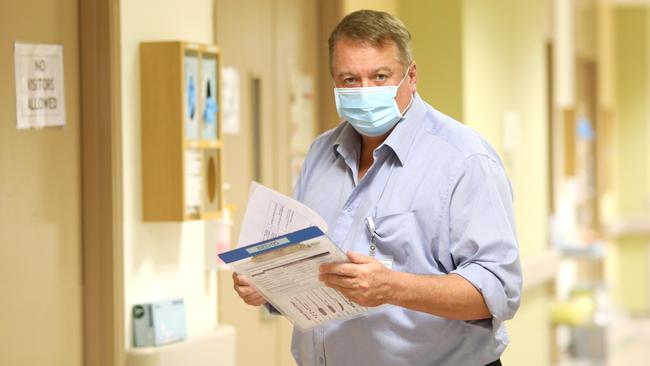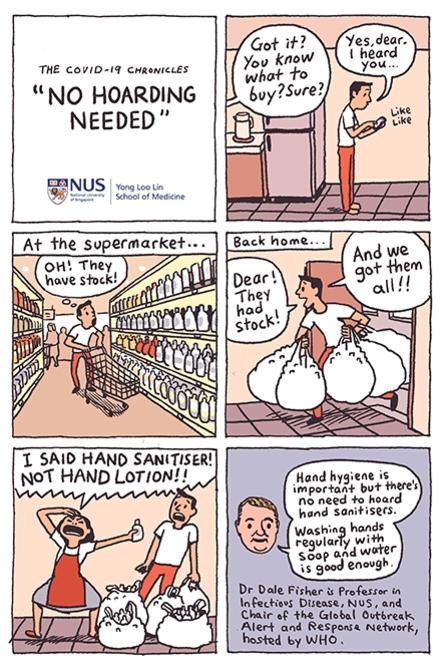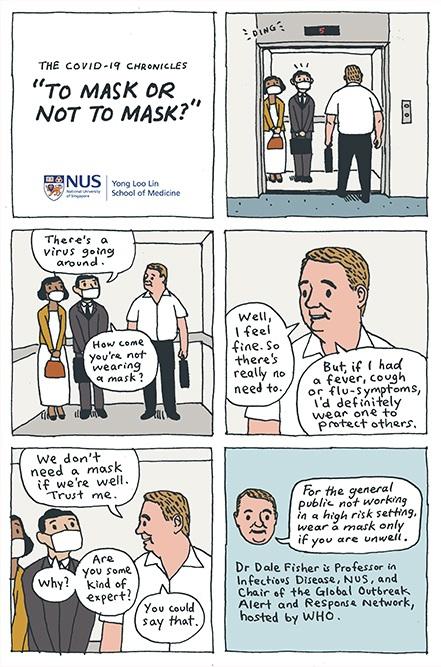Singapore early intervention offers a blueprint for success against coronavirus
Singapore’s rapid response — ensuring its health system is not overwhelmed — has paid off in the coronavirus fight.

For an unvarnished update of what to expect in coming months from the COVID-19 pandemic, Australians could do worse than watch Thursday night’s televised national address, not of Scott Morrison but of Singapore’s Prime Minister, Lee Hsien Loong.
Standing in shirtsleeves, Mr Lee spoke of the strategies his government had put in place to limit the spread of the new coronavirus.
He also warned of a long road ahead and likely “new waves of infection” from imported cases that could require further travel restrictions, staggered work hours and temporary school closures.
“Globally the number of cases is doubling every five to seven days,” he said. “The situation in Singapore is under control” but residents must pull together while — somewhat paradoxically — keep a minimum 1m distance at events and restaurants to minimise the disease’s spread. A month ago, Singapore was dealing with the second largest outbreak of the virus outside mainland China, but has since emerged as a global role model for how to manage the most serious disease outbreak in decades. It has had no COVID-19 deaths in 187 cases

It has managed this through a combination of quick detection and diagnosis, strict quarantine and government transparency, says Dale Fisher, an Australian-born infectious diseases expert playing a key role in the city state’s coronavirus public information campaign.
Professor Fisher, a National University of Singapore professor of medicine and chair of the Global Outbreak Alert and Response Network at the World Health Organisation, has for weeks been the animated face of cartoons tackling questions about the virus. The strips have had more than a million hits.
“Flattening the curve” — ensuring Singapore’s health system is not overwhelmed — has been key to Singapore’s strategy.

“This is really important because people ask me, ‘why don’t you get it over with and let it run’?” Professor Fisher told The Weekend Australian. “By doing that you overwhelm health facilities. Once you run out of beds, ventilators, oxygen cylinders, people will die of the disease. You ask what Singapore is doing better? We still isolate all our positives in hospital. Anyone with respiratory illness that comes into a hospital gets a swab. You really don’t want these people with mild disease saying ‘actually I feel fine, let’s go down to the pub’.
“You can never stop containing. Even if you lose control, China has shown you can regain it.”
Professor Fisher said early intervention had been critical, citing new academic modelling concluding China’s COVID-19 caseload might have been 66 per cent lower had it implemented containment measures just a week earlier.
Singapore was among the first to put temperature monitors at arrival points, to halt flights from Wuhan on January 23, and to place all travellers from Hubei under mandatory quarantine.

From Monday, all visitors who have been to Italy, France, Spain or Germany in the past 14 days will be denied entry or transit, while Singaporeans who have done so must stay home for 14 days.
A rapid test was developed early, and made widely available for free. With each new case, contact tracing teams are deployed. Those in quarantine face spot checks and twice-daily phone messages requiring them to click on locator links. Breaches attract stiff penalties, including jail terms.
Singaporeans also receive detailed daily phone updates on new cases, recoveries and health advisories, while most commercial buildings have temperature scanners.
Expatriate businessman Simon Kearney says it’s not uncommon to see office workers wearing small round stickers, indicating clearance to enter a building multiple times in a day.
Mr Kearney began implementing staggered work hours and split teams for his Click2View content business in early February after the government raised its health alert to the second highest orange, announced a $S4bn stimulus package and issued public health and business continuity guidelines.

“We have gone to split teams so people who do similar work are not allowed to meet,” he said.
Wang Linfa, an Australian virologist with the National University of Singapore, says Singapore’s early reaction was driven by hard lessons from the deadly 2003 SARS epidemic, though Singapore’s one-party political system also allows it to impose measures that might not be possible in other countries.
“In Singapore, police can track the mobile phone GPS of all people who came into close contact with a positive case. If you have a really bad outbreak in one cluster they can tell if someone was there for 30 seconds or 30 minutes,” he said.
What works for a semi-authoritarian city state of six million people may not work in Australia, of course.
But Professor Fisher insists the key elements of Singapore’s strategy are easily transported.
“Get out there and tell people why you’re doing certain things and what to expect next. And get your positive cases out of society quickly,” he said.




To join the conversation, please log in. Don't have an account? Register
Join the conversation, you are commenting as Logout